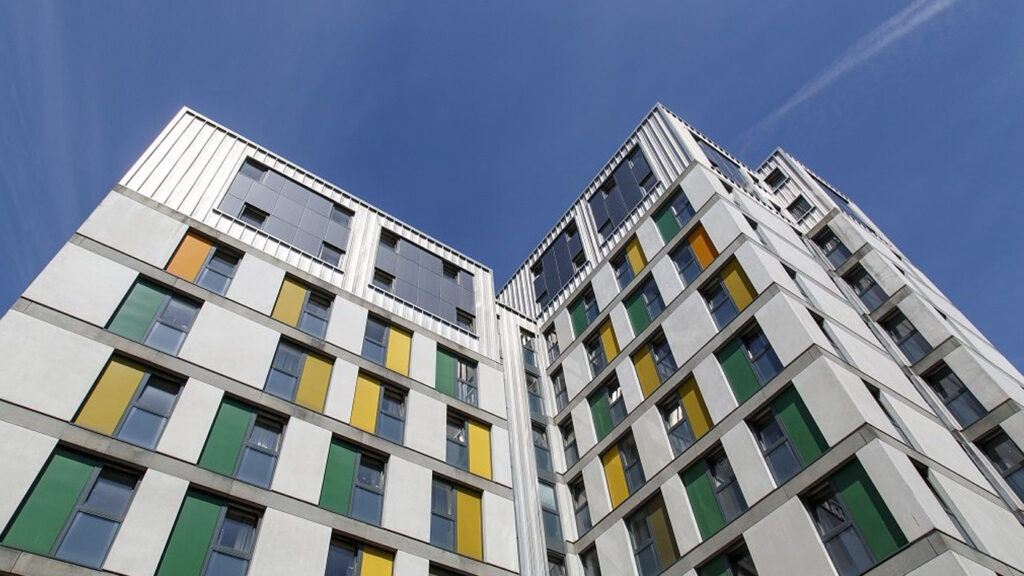Each fall, more than 20 million students attend universities and colleges in the United States. The question of where they will live through the duration of their academic careers poses a significant opportunity for investors, and particularly for those who are sensitive to volatility during economic downturns.
“Student housing is known to be recession-resilient,” said Dorothy Jackman, senior managing director of the National Student Housing Group at Colliers International. “During an economic downturn, many people decide to further their educations and enrollment trends remain strong.”
Enrollment trends are a significant driver and the major metric to consider when investing in the space. Traditionally, student housing investors have been attracted to Tier 1 markets defined as universities with more than 20,000 full-time students. However, the recent demand and increased enrollment growth in Tier 2 (10,000–20,000 students) and Tier 3 (less than 10,000 students) markets has not gone unnoticed. Now, Tier 2 and Tier 3 markets are also seen as viable opportunities for student housing investors and developers.
While student housing was considered a “niche” asset class for a number of years, the industry has become more institutionalized over the past decade and now has two publicly traded REITs creating interest from a broad spectrum of investors.
Here are five reasons to consider investing in student housing:
1. Growing Sales Volume
2016 saw the highest sales volume in U.S. history for student housing with approximately $10.35 billion in total sales volume and 174 individual transactions. In previous years, transaction velocity was in the $3 billion–$6 billion range. The space is active and investors generally have the ability to enter the market on several levels, whether as value-add or stabilized assets, and in a variety of markets.
2. Asset Class Diversification
In 2016 the student housing market also experienced the highest prices per unit in the industry’s history. Capitalization (cap) rates were at record lows for all student housing asset classes in 2016, with particular compression for Class B and Class C products. In 2016, 27 Class A products transacted with the average price per unit at $239,142 and the average price per bed at $86,563.
During that same time, 113 Class B and Class C products transacted with an average price per unit of $135,511 and average bed price of $55,280. These dynamics further the variety of options in which investors can elect to invest in the space, choosing options that align with their growth and return strategies.
3. Increasing Activity and Disposition Options
The student housing industry continues to attract increased equity and a wide array of diversified investors, which in turn has driven value up while pushing cap rates down. As the industry has matured, student housing has attracted more cross-border investors, with that group responsible for 25% of student housing transactions in 2016. This strengthens investors’ options upon disposition, and we expect that cross-border investors will continue to increase their activity in the space.
4. Value-Creation Potential
Purpose-built student housing came into focus in the early 1990s, which means that as those buildings age, they can become great candidates for value creation. As the pool of student housing investors becomes more diverse, there are more people seeking opportunities to create value in their properties. By making improvements, many investors are able to increase rents and thus, net operating income — as well as realizing higher returns at a faster rate as compared to the acquisition of stabilized assets.
5. Anticipated Demand Growth
University enrollment is increasing in the U.S. and the National Center for Education predicts continued increases in college enrollment in the years to come. This bodes well for sustained demand for student housing across the country and further opportunities for investors. The space is also becoming a global enterprise. In 2016 we saw Latin America and the UK leading the charge in terms of student housing growth, and there is an expectation that more countries will continue to develop on the U.S. model of purpose-built student housing.

 Colliers Insights Team
Colliers Insights Team

 Aaron Jodka
Aaron Jodka
 Miles Rodnan
Miles Rodnan Andrew Wellman
Andrew Wellman
 Matt Nelson
Matt Nelson